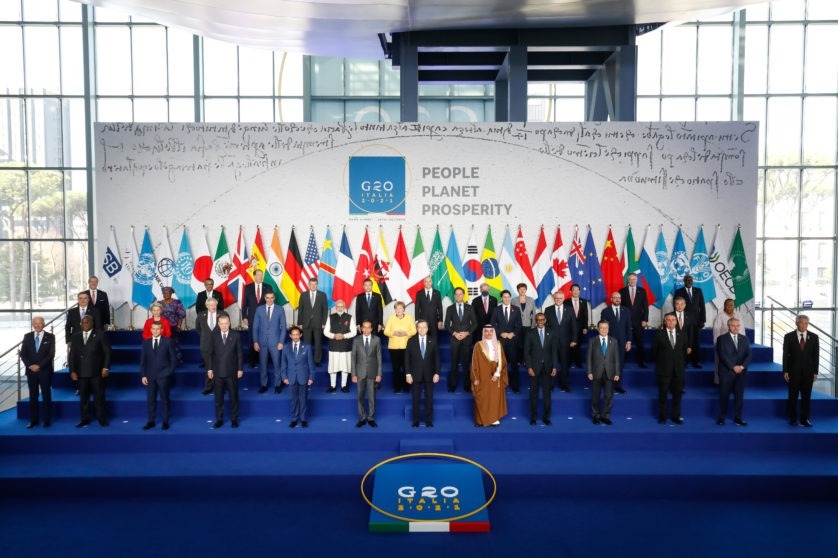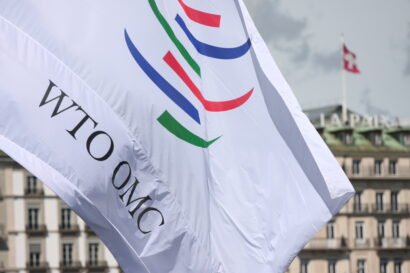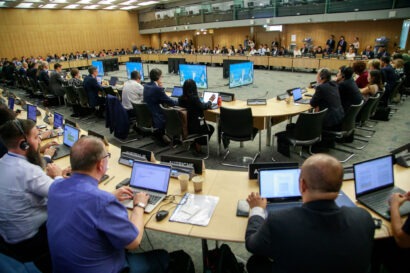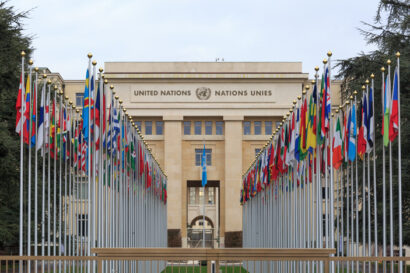Last October, 137 of the 140 jurisdictions that are members of the Inclusive Framework reached a high-level agreement on the taxation of multinational corporations, combining a reallocation of taxing rights to market countries (Pillar 1) and a 15% global minimum effective tax rate (Pillar 2). The agreement builds on proposals developed by the OECD, a club of mainly high-income countries.
Four middle-income countries (Kenya, Nigeria, Pakistan and Sri Lanka) have not endorsed the agreement. Others, such as Ghana and the Philippines, have chosen not to join the Inclusive Framework at all. Even countries that did endorse the deal now face the choice of implementing it or not. Some countries reportedly endorsed it very reluctantly. In the words of Argentina’s Finance Minister, it was a choice between a bad deal or worse (no deal at all). The African Tax Administration Forum has lamented that African countries’ interests have been sidelined. So has the global tax justice movement, with leading organisations rejecting the deal
So, where does this leave low and middle-income countries (LMICs)? How beneficial is the agreement for them, and what should they do about it?
Pillar 1: Revolutionary, but paltry
Pillar 1 is revolutionary because, for the first time, it awards some taxing rights to destination countries (where the final sales of multinational’s goods or services are made) as opposed to residence countries (where the companies are headquartered) or source countries (which host their operations). This redistribution should benefit LMICs, as they are rarely residence countries and the profits they can tax at source are usually low.
Nevertheless, Pillar 1 is also paltry because it only applies to a fraction of the profits of a fraction of corporations. Specifically, it will redistribute 25% of the taxable profits above a 10% profit margin of only around one hundred mega-corporations with annual global turnover over 20 billion Euro, and excludes the extractive and financial industries.
Small change, with a catch
The impact of Pillar 1 on LMICs’ tax revenues will be low. Using a methodology developed by Oxford Economics, Oxfam estimates that 49 LMICs for which data is available could collectively gain as little as $749 million in additional tax revenue a year through Pillar 1. That is only 0.026% of their GDP. Some low-income countries could gain less than $1 million a year (or even nothing at all where sales of the mega-corporations are very low), which may not be worth the administrative costs of implementation.
One might say that a little is better than nothing. But there is a catch. An essential part of the deal is that all countries would renounce levying taxes on digital services and “other relevant similar measures” (not yet defined).
Under the current rules, countries can only tax corporations that have a physical presence in their territories. Digital services like web search (e.g., Google) or social networking (e.g., Facebook) provided across borders escape tax in destination countries. Moreover, they reflect monopoly power and represent a growing share of the global economy.
An increasing number of countries have adopted or were considering adopting digital services taxes (DSTs) or similar measures. That includes LMICs like Nigeria, Pakistan, Kenya and Sierra Leone. Oxfam estimates that if all 49 LMICs levied a tax of 3% of gross revenue from automated digital services, they could raise almost as much as they would under Pillar 1. Some countries could gain more by keeping or adopting such a tax than with Pillar 1. Or they could set a higher rate than 3%, or adopt “other similar measures” (e.g., it is not clear whether Nigeria’s “significant economic presence” rule would be allowed alongside Pillar 1 or not). They would keep more policy flexibility through unilateral measures and avoid Pillar 1’s mandatory arbitration process that may disenfranchise smaller countries.
Because large digital services corporations are predominantly American, the US government regards DSTs as a discriminatory trade barrier. It imposed trade sanctions on half a dozen countries that adopted such taxes, which were then dropped as a result of the Inclusive Framework deal. This looming trade war is what drove the Pillar 1 negotiation process in the first place, and the renunciation of DSTs is a core part of the deal.
The US position is unreasonable: the fact that almost all big tech corporations happen to be American does not make DSTs discriminatory. DSTs were not conceived to rob Americans, but to respond to a new economic trend and outdated international tax rules.
The threat of trade sanctions against sovereign states exercising their taxing rights is Trump-era bullying that has unfortunately been sustained by the Biden Administration. LMICs should stand firm. Each country should have a hard look at what they can gain from Pillar 1 vs. DSTs or “other relevant similar measures” and determine what is best for them. If the United States follows through with trade sanctions, it should be condemned for what this is: neo-colonialism.
Pillar 2: Better than the status quo, but biased against LMICs
The global minimum tax is meant to make nearly all large multinational corporations pay an effective tax rate of 15% in nearly all the countries where they operate. Its purpose is twofold: curb both tax avoidance and tax competition.
Tax avoidance is the abuse of tax havens by multinational corporations, which use accounting gimmicks to shift their profits from high-tax to low or no-tax countries. With the global minimum tax, there would be no point in shifting profits to countries with effective tax rates below 15%. That should eventually put zero-tax havens like Bermuda out of business.
Tax competition is the global race to the bottom that governments have engaged in for decades, cutting their corporate tax rates or giving tax incentives in order to attract foreign investment (most of the time ineffectively). With the global minimum tax, lowering a country’s effective tax rate below the global minimum rate would become self-defeating, because other countries would then collect the difference, depriving the country giving away tax incentives from revenues while nullifying any effect these incentives might have on investment. Many LMICs have high statutory rates, but offer tax incentives, and the global minimum tax would enable them to raise more revenue by removing some tax incentives without affecting foreign investment.
That, at any rate, is the intent. Alas, the agreement has several weaknesses.
Too little, too low
One problem is that 15% is too low – barely above Ireland’s current rate, for instance. Given that the average statutory corporate tax rate is close to 25% and many LMICs have rates over 30%, a 15% minimum effective rate would leave ample room for significant tax avoidance and tax competition to persist.
A second problem is the “substance carveout,” which will exempt routine profits linked to brick-and-mortar operations from the global minimum tax. This will reduce the true global minimum effective tax rate below 15% and significantly blunt its impact on tax competition.
Problems with the pecking order
The third problem is that the proposed global minimum tax will be collected by the countries where multinationals are headquartered, which are predominantly high-income countries. Only if the headquarter country opts out of the global minimum tax will the countries where multinationals operate (including LMICs) be allowed to collect it.
This pecking order is the latest manifestation of the tug-of-war between multinational corporations’ residence and source countries, which dates back to the 1920s when colonial powers claimed rights for the former. The negotiations have been dominated by OECD members and this pecking order was built in to the design from the start. It is neo-colonialism, pure and simple. It reminds us why global tax rules should be developed by the United Nations, not the OECD.
Practically, this pecking order means that source countries must devolve the job of fighting tax avoidance to residence countries – and cede the related revenues. The agreement states that Inclusive Framework members must accept the implementation of Pillar 2 by other members, including the rule order. The United States is setting the tone with legislation pending in Congress that would exempt multinationals subject to Pillar 2 from the US Base Erosion Anti-abuse Tax (BEAT). The agreement may likewise constrain LMICs’ sovereign right to adopt unilateral anti-base erosion taxes (which are taxes on certain payments between the subsidiaries of a multinational corporations).
The so-called “Subject To Tax Rule” that is part of the agreement is a poor consolation prize for LMICs in that regard. It would allow LMICs to modify bilateral tax treaties to collect more withholding taxes on royalties and interests. But it comes with three major limitations: it depends on the collaboration of tax havens that might leave the Inclusive Framework; the withholding tax rate is capped at only 9%; and it does not cover interests, royalties and service fees embedded in the cost of goods sold. It is not likely to cover all service fees and capital gains.
The OECD retorts that the priority for residence countries makes the global minimum tax much easier to administer, as each multinational will pay the tax to a single country (its home country) rather than to all the countries where it operates.
The OECD also argues that the priority question is moot in the long run because the global minimum tax will eventually disappear: its tax base is the profits currently stashed in tax havens, which will dwindle over time as multinationals unwind their complex tax planning structures because the tax will render them useless. All countries will be able to tax the profits no longer shifted to tax havens through their regular corporate income tax. Indeed, since the agreement was reached both the United States and the European Union have announced that they would levy a “top up tax” on the domestic profits of multinationals operating on their territories to ensure that they all pay an effective rate of 15% and hence will not have to pay the global minimum tax to their residence countries.
But who gets to collect the global minimum tax is relevant in the short to medium term. LMICs certainly face more dire needs in the context of the pandemic. And since the global minimum rate is low compared to most LMICs’ corporate tax rates, plenty of profits could remain in low-rate (15%) tax havens forever.
How should LMICs approach Pillar 2?
As a priority, LMICs should either review their tax incentives or emulate the United States and European Union by adopting domestic top up taxes to ensure that all multinationals operating on their soil pay a 15% effective tax rate at source. While top-up taxes will ensure the profits that are actually declared in LMICs will be taxed by those countries and not by residence countries, they will not prevent multinationals from shifting profits out of LMICs to low-rate tax havens.
To deal with profit shifting, LMICs must choose between implementing Pillar 2 or adopting unilateral base erosion taxes. Each country should make its own cost-benefit analysis taking the following points into consideration:
- LMICs will get close to no direct revenue from Pillar 2 because of its neo-colonial pecking order. The OECD’s impact assessment of Pillar 2 shows LMICs reaping direct revenue from the global minimum tax equal to 1% to 2% of their current corporate tax revenue. However, that is misleading. (Due to data limitations, the OECD assessment relies on the assumption that the profits from multinational corporations headquartered in countries that opt out of the global minimum tax will be distributed among other countries according to their share of the corporations’ global turnover; in fact the agreement states that these profits will be assigned to the countries that host intermediate holding subsidiaries and opt into the global minimum tax, like Ireland, Luxembourg, and the Netherlands.) If they adopt a domestic top up tax such countries will also get revenue that would otherwise have been collected by LMICs through the Subject To Tax Rule.
- LMICs will nevertheless gain indirect or dynamic revenue from the global minimum tax because it will reduce both tax avoidance and tax competition. However, they will reap these benefits even if they opt out of the global minimum tax, as long as a critical mass of residence countries (like the G7) opt in.
- There is a cost for LMICs of opting into the global minimum tax, which is the possible constraints on unilateral anti-base erosion taxes.
- There is no cost for LMICs to opt out of the global minimum tax, as long as their effective tax rate is above 15%, which would be the case if they adopted top-up domestic taxes.
This last point could no longer be true if the European Union blacklists all the countries that opt out of the global minimum tax as tax havens. It would be a good idea to integrate the global minimum rate as one criteria for the tax havens list. But it would be outrageous to blacklist high-tax LMICs as tax havens on the grounds that they refuse a neo-colonial deal.
Where to from here?
In summary, most LMICs will gain revenue by adopting Pillar 1, albeit very little, with the possible exceptions of countries that already have a DST or similar measure, which could lose, and of very small economies. Most LMICs are likely to gain close to nothing by adopting Pillar 2 (other than the domestic top up tax); only the few LMICs home to large multinationals could gain meaningfully. However, both Pillars also curtail LMICs’ sovereignty by preventing them from adopting some (as yet poorly defined) unilateral measures, which could potentially yield more revenue than the pittance they can expect from the agreement. Before rushing to adoption and implementation, each country should thus compare the impact of each pillar to unilateral alternatives based on their individual circumstances, now and in the foreseeable future, and pick what is best for them.
High-income countries should abandon intimidation measures like trade sanctions or blacklisting of LMICs that are not true tax havens. If the Inclusive Framework wants to remain inclusive, it should allow its LMIC members not to sign the Pillar 1 multilateral agreement, define “other similar relevant measures” very narrowly or exempt LMICs from that restriction altogether, and allow them to adopt anti-base erosion taxes, which should be considered compatible with Pillar 2 rules.



